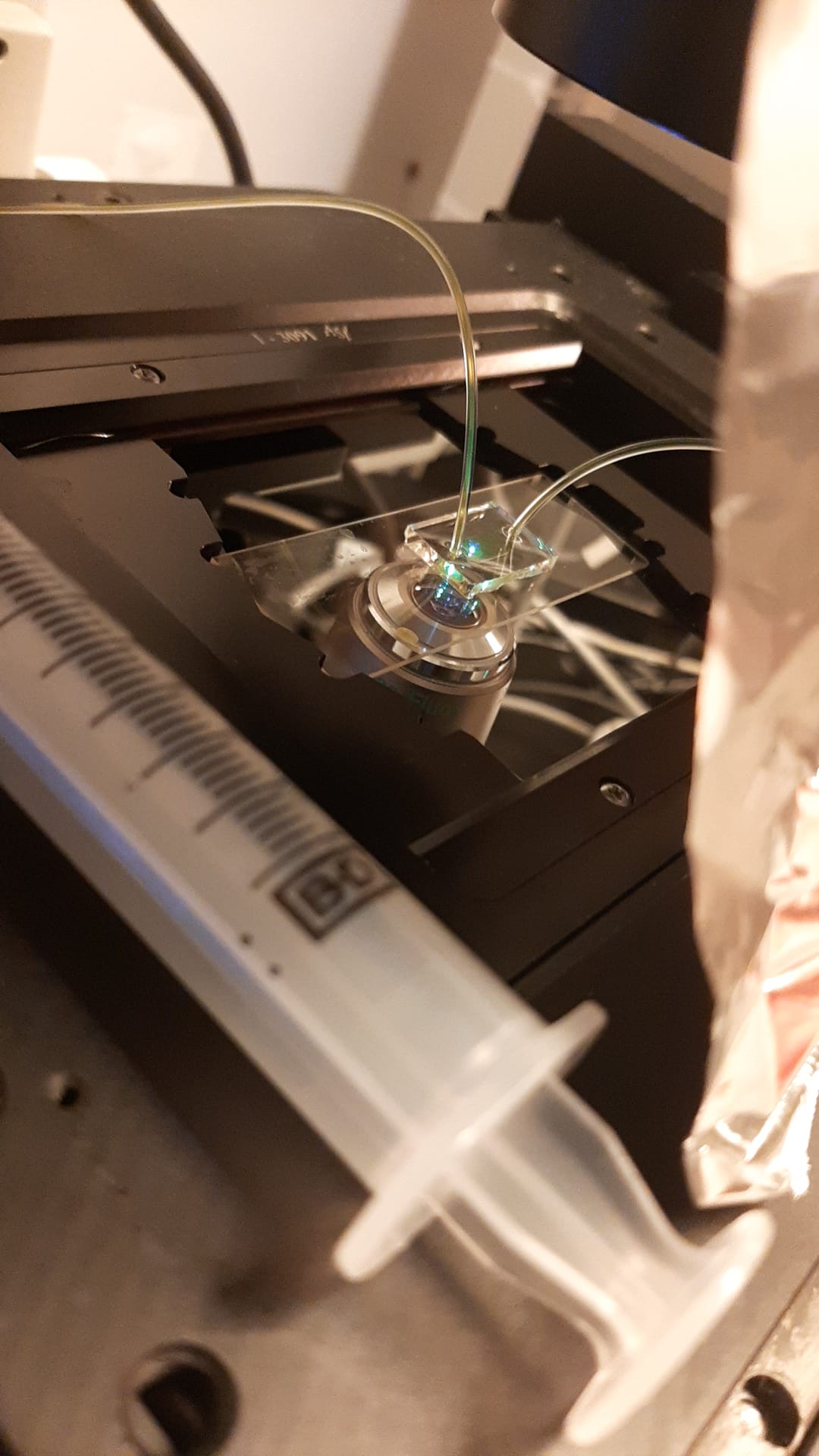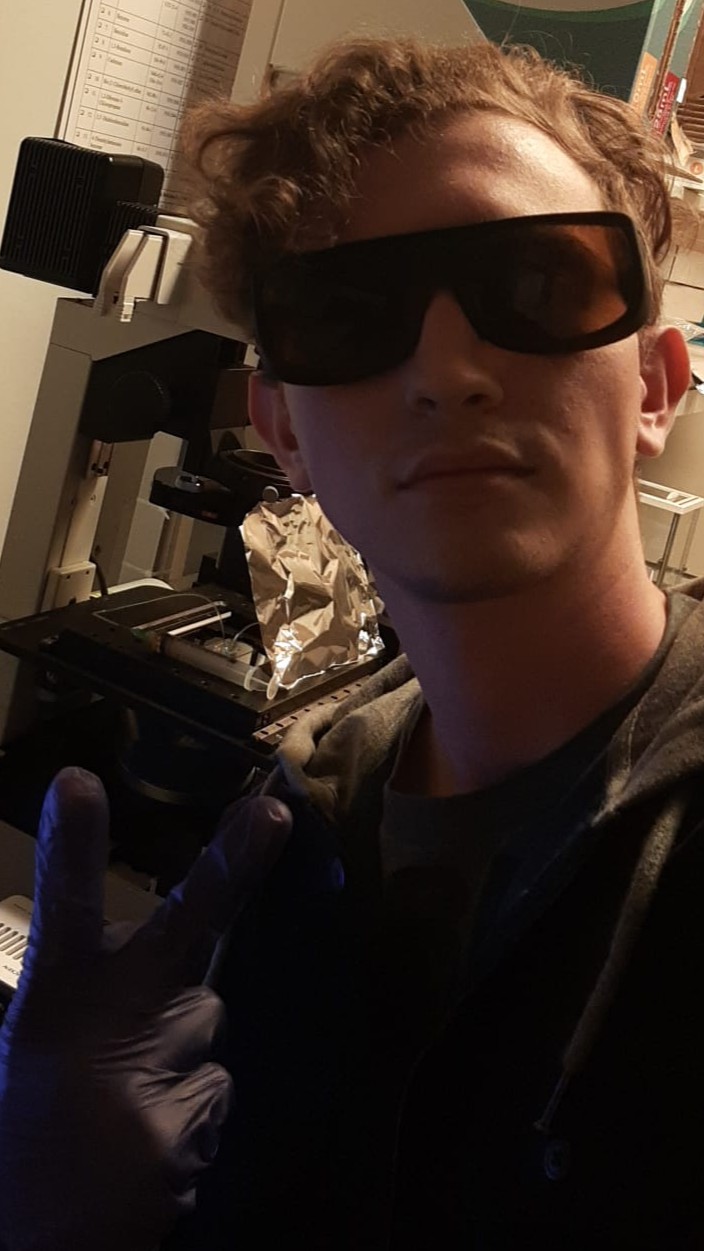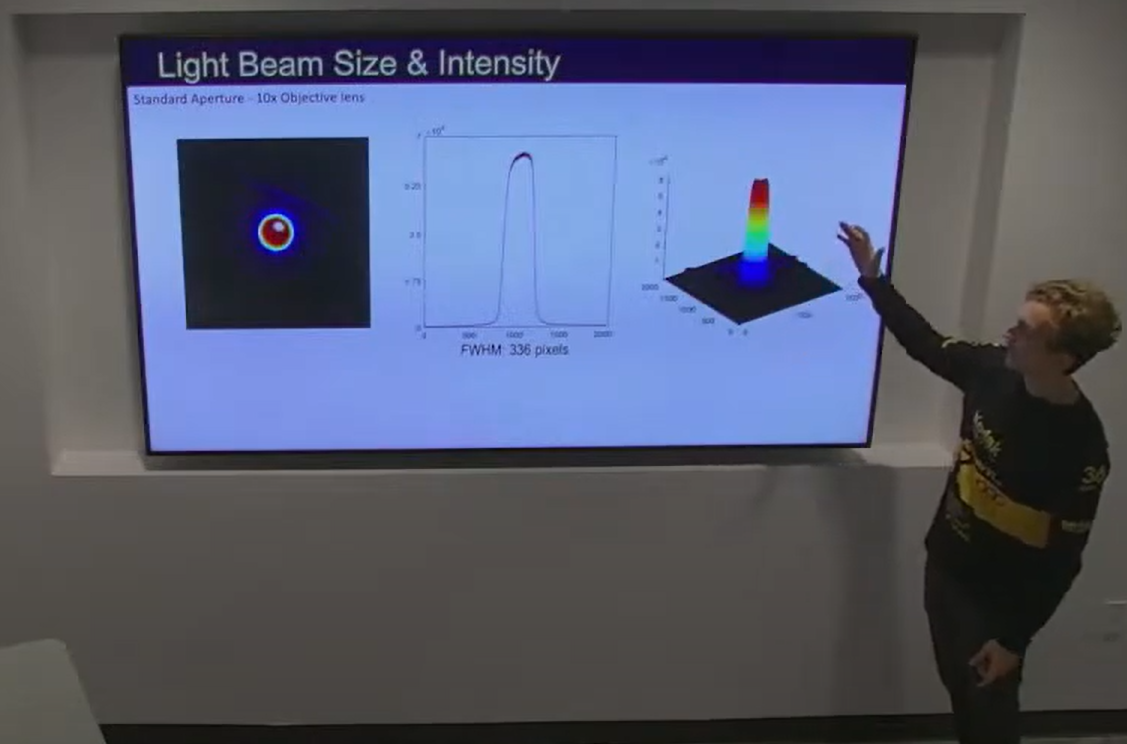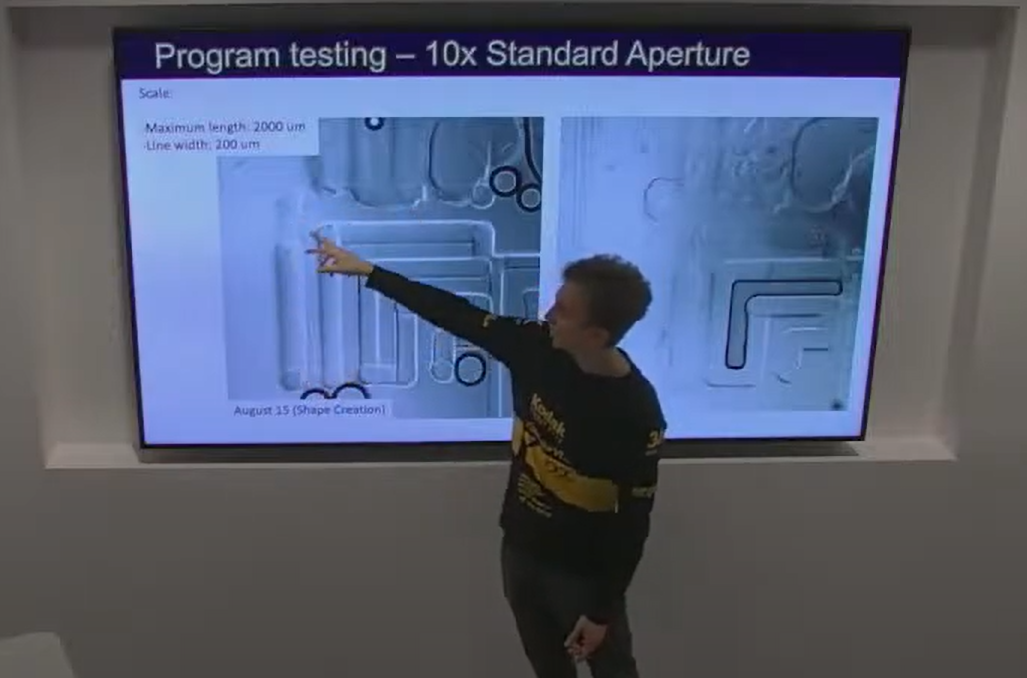AUTOMATING A MASKLESS LITHOGRAPHY SYSTEM
This work is part of the ongoing research by Florida International University’s Pozdin Lab. My goal was to automate a maskless lithography system that allows biomedical researchers to create certain microscopic structures and functional devices on hydrogel. This is especially promising for fields like bioelectronics, tissue engineering, and lab-on-a-chip systems.
I concentrated on ensuring that my automation solution met the technical requirements of the ongoing research.
Impact
Previously, creating the structures took the lab several days. Now, the process can be completed in just a few hours.
My contribution
As part of my work, I developed software to control microscope stage movements, replacing manual operation with a MATLAB interface for precise structure fabrication.


I had to characterize the equipment by performing measurements (e.g., intensity and size of a light beam) and tests to ensure the system’s functionality.
I also collaborated with engineers from Applied Scientific Instrumentation, integrating them in the system’s development process.
What is Maskless Lithography?
This video shows lithography using a photomask.
Photomask Lithography:
A photomask is like a stencil for light—it has a predefined pattern that controls where light passes through.
1. Light shines through the photomask, which blocks certain areas while allowing light to hit others.
2. The exposed parts of the liquid hydrogel solidify, creating structured patterns.
Maskless Lithography:
In contrast, maskless lithography is like drawing freehand with a pencil.
1. A focused light beam is used to “draw” the pattern directly onto the hydrogel.
2. The exposed areas of the liquid hydrogel solidify, forming the desired hydrogel structures.
This technique offers high-resolution patterning without the need for a photomask, providing greater flexibility for design changes and making it ideal for rapid prototyping and intricate patterns.


